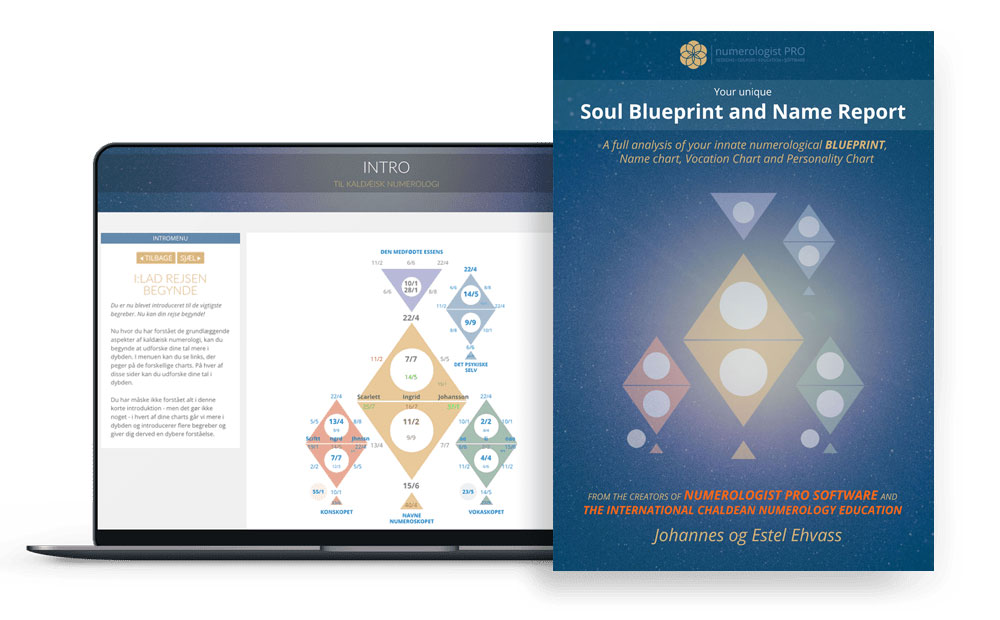Deep Dive into the 1st House: The House of Self

Johannes Ehvass
Welcome, dear reader! In this series, we explore the twelve houses of astrology, each representing a distinct aspect of our lives. These houses form the core of an astrological chart, guiding us through the varied realms of personal identity, relationships, career, and more. As we delve into each house, we'll discover how they shape our perspectives and intersect with planetary energies. Whether you're well-versed in astrology or newly curious, join me on a journey through these celestial domains, where cosmic patterns illuminate the intricacies of human experience.
Deep Dive into the 1st House: The House of Self and Identity
Introduction to the 1st House

Astrology, an ancient and intricate study of the stars, has permeated human thought for millennia.
At its core, astrology aims to understand and interpret the influence of celestial bodies on our individual and collective lives.
One of the foundational components of astrology is the twelve houses. Each of these houses corresponds to a particular arena of life, providing insight into various facets of an individual’s experience.
The 1st house, often referred to as the “gateway” to one’s natal chart, holds a prime position in this system. The natal chart, for those unfamiliar, is essentially a snapshot of the sky at the time of one’s birth. It captures the positions of planets, their relationships with each other, and their placements in various houses and signs. The 1st house, as the initial sector of this chart, marks the beginning of an individual’s journey through the zodiac. It signifies how a person projects themselves to the world and how the world, in return, perceives them. It is a reflection of one’s fundamental identity, encompassing aspects such as physical appearance, personality traits, and inherent tendencies.
Macrocosm and Microcosm: The 1st House Correspondence
The philosophical doctrine of “As above, so below” suggests that there’s a correspondence between the larger universe (macrocosm) and the individual being (microcosm). In astrology, this thought is paramount, establishing a connection between celestial occurrences and earthly events. In the context of the 1st house, this axiom becomes especially pertinent.
From a physical standpoint, the 1st house corresponds to the head and face. Just as the head is the leading part of the body, housing vital organs like the brain and eyes, the 1st house stands at the forefront of the astrological houses. This microcosmic representation signifies the primary way one interfaces with the world. Just as the face reveals emotions, intentions, and health, the 1st house provides insights into one’s intrinsic nature, aspirations, and challenges.
On a more esoteric level, the spiritual correspondence of the 1st house revolves around the soul’s incarnative experience. Ancient traditions posit that the soul embarks on a journey of multiple lifetimes, each offering unique lessons and experiences. The 1st house, in this context, symbolizes the soul’s entrance into the physical realm for its current incarnation. It captures the essence of the soul’s intent, purpose, and challenges for this particular lifetime.
Historical Context
The prominence of the 1st house is not a new phenomenon. Its importance can be traced back to ancient civilizations and their astrological traditions. Babylonian astrologers, who are often credited with laying the groundwork for Western astrology, placed significant emphasis on the Ascendant or the rising sign, which is closely associated with the 1st house. Their intricate ephemerides (tables that list the positions of celestial bodies over time) and horoscopic analysis are testaments to their reverence for the 1st house and its implications.
In Hellenistic astrology, an ancient tradition that blossomed in the Mediterranean region around the 3rd century BCE, the concept of the 1st house, or “horoskopos”, was further refined. Here, the 1st house was not just seen as the house of self but also as a determinant of one’s life path, vital force, and even physical vitality.
Fast forward to medieval Europe, the concept of the 1st house underwent further elaboration. Medieval astrologers, drawing from Arabic sources, introduced intricate techniques that deepened the understanding of the 1st house. They delved into topics like temperament analysis, which combined the influences of planets in the 1st house with bodily humors to determine an individual’s disposition.
In the East, Vedic astrology, a system that originated in ancient India, had its own interpretation of the 1st house. Known as the “Lagna” or the “Ascendant,” the 1st house in Vedic astrology is deemed pivotal for understanding an individual’s life journey. Just as in Western traditions, the Lagna captures the essence of one’s physical attributes, character, and general life path. However, the emphasis slightly shifts, with a heightened focus on the karmic path and spiritual undertakings associated with the soul’s journey.
As the Renaissance dawned, and with the advent of humanism, the individual’s role in the cosmos was increasingly emphasized. Astrologers of this era viewed the 1st house as a map of one’s personal destiny, integrating both mundane events and spiritual aspirations. The holistic approach of Renaissance astrologers set the stage for modern astrological practices, wherein the 1st house is often the starting point of natal chart interpretations.
The 20th and 21st centuries have seen a resurgence in the interest in astrology, especially in the context of psychological and evolutionary paradigms. Modern astrologers, influenced by psychological theories, view the 1st house as a complex interplay of inherent tendencies, early environmental influences, and conscious choices. This contemporary understanding underscores the dynamic nature of the 1st house, painting it as a domain where nature meets nurture, and where free will intersects with destiny.
The Rich Tapestry of the 1st House
In reflecting on the historical journey of the 1st house, we witness an evolution in understanding, from the foundational to the intricate. Ancient civilizations, in their quest to decode the mysteries of existence, recognized the 1st house as a mirror to one’s essence. Over the centuries, as astrology branched out into various schools of thought, the layers of the 1st house deepened, adding dimensions of psychology, karma, and even medical astrology to its realm.
The modern astrologer, armed with this rich legacy, approaches the 1st house with a blend of reverence and curiosity. Recognizing its multifaceted nature, they explore its realms to glean insights into one’s strengths, challenges, and purpose. Whether it’s understanding the significance of the Ascendant sign, interpreting the influence of planets positioned in the 1st house, or discerning the nuances of the house cusp, the 1st house remains a treasure trove of wisdom.
In essence, the 1st house serves as a beacon, shedding light on the path of self-awareness. By understanding its messages, one can navigate life’s journey with greater clarity, aligning with one’s true nature and purpose. The exploration of the 1st house, thus, is not just an astrological endeavor but a profound journey into the heart of self-discovery.
Understanding the 1st House: Ascendant, Immediate Environment, and The Cusp
The Ascendant or Rising Sign
The Ascendant, colloquially known as the Rising Sign, occupies a unique and pivotal role within the natal chart. Often, when people refer to “their sign,” they’re referencing their Sun sign, which is undoubtedly significant. However, astrologers often gravitate towards the Ascendant with equal, if not more, weight due to its multifaceted importance.
Defining the Ascendant
The Ascendant is the zodiacal sign and degree that was ascending on the eastern horizon at the exact moment of one’s birth. This dynamic point in the natal chart is a marker of both beginnings and externalities—it signifies how we begin things and how the world perceives us at first glance.
For many, the Ascendant serves as a mask or facade, not in a deceptive manner, but more in terms of first impressions. It’s that initial energy people sense when they meet someone. For some, the Rising sign may closely align with their core identity (Sun sign), making their external demeanor and internal essence seem unified. For others, the Ascendant might be quite different, leading to varied layers of their personality that others see versus what they feel internally.
Role and Significance of the Ascendant
The Ascendant serves as a crucial touchpoint in interpreting an individual’s natal chart for several reasons:
Physical Appearance and Mannerisms: While genetics play the primary role in determining one’s looks, the Ascendant adds nuanced touches, influencing particular characteristics or prominent features.
Behavioral Tendencies: The Ascendant often dictates our instinctual reactions. It’s our “go-to” energy, especially in new or unexpected situations.
Life Path and Journey: As the starting point of the 1st house, the Ascendant lays down the path for the subsequent houses, effectively setting the tone for one’s journey through life.
The Immediate Environment
Within the realm of the 1st house, the immediate environment is more than just a backdrop—it’s a dynamic entity that shapes, influences, and mirrors facets of our identity.
Neighbors, Siblings, and Early Interactions
The 1st house isn’t only about self; it’s also about our interactions with immediate surroundings. Siblings, often our first peers, play a significant role in shaping our early understanding of relationships, competition, love, and rivalry. They become our first friends, enemies, teachers, and students. The nature of these relationships, be it harmonious, competitive, or otherwise, can often be gleaned from the nuances of the 1st house.
Similarly, neighbors and other individuals from our early environment teach us about social norms, boundaries, and community. These early interactions lay down patterns that we often replicate or rebel against in later relationships.
Early Learning Experiences
The environment of our formative years deeply impacts our learning experiences. The 1st house, in its association with beginnings, offers insights into one’s early educational experiences and inclinations. Whether one was curious and explorative, shy and reticent, or keen and eager, can often be hinted at by planets or aspects touching this house.
The Ascendant and 1st House Cusp
The Ascendant, also known as the Rising Sign, is the exact degree of the zodiac that was on the eastern horizon at the time and place of birth. It is the cusp or starting point of the 1st house in one’s natal chart and plays a crucial role in shaping one’s identity, appearance, and the first impressions one makes on others.
Influence of the Sign on the Ascendant
Each zodiac sign has its unique energy, and when a sign is positioned on the Ascendant, it infuses the 1st house’s themes with its characteristics. For instance, a Gemini Ascendant might indicate an individual with a dual nature, someone versatile, curious, and communicative. In contrast, a Capricorn Ascendant might suggest a person who presents themselves as mature, reserved, or even authoritative.
Furthermore, planets that are in close proximity to the Ascendant, especially if they’re in the 12th house or the beginning degrees of the 1st house, can significantly influence the way the Ascendant expresses itself. These planets can amplify, modify, or sometimes even challenge the energies of the Ascendant sign.
Interactions with the Immediate Environment
While the 1st house and its Ascendant primarily concern the self, they also govern the way one interacts with their surroundings. This includes siblings, neighbors, and beyond. Every person we meet and every experience we have, especially in our formative years, leaves an impact.
The Ascendant and the qualities of the 1st house dictate how we approach these interactions. Do we lead with curiosity? Are we defensive? Do we prefer observing from the sidelines or jumping straight into the action? These tendencies, often rooted in our early years, mold our experiences and subsequently shape our personalities.
Transits and Progressions: The Evolving Self
While a foundational understanding of the 1st house and its Ascendant can provide insight into our inherent nature, it’s essential to realize that astrology, like life, isn’t static. As planets transit through the 1st house or make significant aspects to the Ascendant, we encounter opportunities for growth, face challenges, and undergo personal evolution.
For instance, a Saturn transit over one’s Ascendant might introduce a period of introspection, maturity, or challenges that demand growth. Conversely, Venus transiting the 1st house could signify a time where one’s charisma shines, relationships flourish, or where there’s a heightened appreciation for beauty and comfort.
Themes of the 1st House
The 1st house is not just a representation of the “self.” It is a multi-faceted entity that presents the canvas upon which a myriad of personal attributes, expressions, and experiences are painted.
Personal Identity and the Journey of Self-Realization
At the core of the 1st house’s themes lies the quest for personal identity. This house deals with the primal urge to understand oneself. From the moment of birth, when the Ascendant is determined by the precise time and place, a unique journey of self-realization begins. This journey is often filled with introspections, external influences, reflections, and the eternal oscillation between who we think we are and how we are perceived by the world.
Throughout life, individuals continuously redefine and reshape their identities. It’s a process of adding layers of understanding, peeling off misperceptions, and integrating experiences. The 1st house stands as the witness to this evolving dance of self-awareness.
Physical Appearance: The Visible Manifestation of the Self
While the inner journey of self-realization is a profound and intrinsic process, the 1st house also governs the outermost, visible layer of an individual – their physical appearance. While genes play a significant role in determining one’s physical attributes, astrologers often find correlations between the Ascendant, its ruling planet, and the individual’s appearance.
It’s not to say that astrology can predict exact physical traits, but certain energies can manifest in the physical realm in fascinating ways. For instance, Leo Ascendants might have a mane-like hair or a regal bearing, while Capricorn Ascendants might possess a more serious or mature countenance.
First Impressions and the Art of Projection
The 1st house also governs the impressions we make on others when they encounter us for the first time. It’s the energy that precedes words, the aura that one exudes. This projection, whether consciously controlled or spontaneously expressed, has a significant impact on how relationships, both fleeting and lasting, are formed.
Furthermore, how one chooses to present themselves to the world, their choice of attire, their posture, and their demeanor, all fall under the purview of this house. It’s a blend of innate tendencies and learned behaviors.
Interception and Retrograde Planets in the 1st House
The Enigma of Interceptions
In astrology, an intercepted house occurs when an entire sign is contained within a house, with the preceding and following signs marking the house cusps. When a sign is intercepted in the 1st house, it signifies that certain qualities and energies related to that sign might be hidden or not easily expressed in the individual’s personality.
For instance, if someone has Virgo intercepted in the 1st house, they might struggle to express Virgoan qualities like meticulousness, analytical abilities, or a tendency toward service, even if these traits are deeply ingrained within them. This interception can lead to feelings of being misunderstood or not being able to present one’s true self to the world.
Retrograde Planets: The Inner Reorientation
Planets in retrograde motion in the natal chart symbolize energies that are turned inward. When a planet is retrograde in the 1st house, it indicates a profound inner journey associated with the planet’s themes.
For example, Mars retrograde in the 1st house might indicate that the person’s drive, aggression, and energy are directed inwards. Such individuals might second-guess their actions or might have an intense inner drive that isn’t immediately visible to the outside world. It’s a call for introspection, and over time, these individuals often develop a deep understanding of the planet’s energies, refining and channeling them in more conscious and evolved ways.
The 1st House in Different Astrological Systems
Western Astrology: The Personal Self
In Western astrology, the 1st house is seen as the immediate window to an individual’s persona. This house reflects personal desires, natural inclinations, and how these are presented to the world. The Ascendant sign, as the “mask” we wear, takes center stage in shaping an individual’s immediate reactions, primary concerns, and general disposition.
Vedic Astrology: The Physical Being
Vedic, or Jyotish astrology, provides a somewhat different lens, offering nuances that aren’t as pronounced in the Western tradition. In Vedic thought, the 1st house, or “Lagna,” while still representing the body and personality, is also seen as an indicator of the overall life trajectory, including health, vitality, and general life satisfaction.
While Western astrology places a heavy emphasis on the psychological aspects of the Ascendant and the 1st house, Vedic astrology delves deeper into how the 1st house influences one’s life journey from birth to death. It considers factors such as longevity, physical well-being, and the nature of one’s personal experiences.
Differences in Interpretation and Emphasis
The divergent views on the 1st house between Western and Vedic traditions underscore the rich tapestry of insights astrology offers. The Western approach leans towards the psychological, emphasizing self-awareness, personal growth, and individual identity. Vedic astrology, on the other hand, weaves in karmic themes, suggesting that the 1st house also touches on past life energies brought into this incarnation.
Aspects to the 1st House
The Planetary Conversations
In astrology, aspects are essentially conversations happening between planets. When a planet forms an aspect to the 1st house cusp or the Ascendant, it infuses the house with its energy, often leaving a profound impact on the individual’s personality, appearance, and even health.
Conjunctions: Merging Energies
Conjunctions are powerful aspects where planetary energies merge. If a planet is conjunct the Ascendant, its energy becomes a fundamental part of the person’s identity. For instance, Venus conjunct the Ascendant might bestow the individual with charm, beauty, and a natural inclination towards harmony in personal relationships.
Oppositions and Squares: Tensions and Growth
Challenging aspects to the Ascendant, such as oppositions and squares, can indicate inner tensions. These aspects compel growth through challenges. A Saturn square Ascendant, for example, may indicate early struggles with self-expression, perhaps feeling inhibited or repressed. However, these challenges often lead to profound personal development, pushing the individual to cultivate resilience and determination.
Trines and Sextiles: Flow and Opportunity
Beneficial aspects like trines and sextiles bring ease and opportunities concerning the houses and planets involved. Mercury trine Ascendant, for instance, could suggest a natural ability to communicate, making the individual an effective speaker or writer.
Conclusion
The 1st house is a profound testament to the intricate dance between the inner and outer self. It maps the journey from the raw, unrefined energies present at birth to the polished, evolved persona that emerges through life’s experiences.
Understanding the 1st house is like holding a mirror to the soul, reflecting both the shadows and the light. It reminds us of the continuous evolution of our identities, pushing us towards self-awareness and, ultimately, self-acceptance. The study of the 1st house is not just an astrological pursuit but a deeper dive into understanding human nature and the timeless quest for self-awareness.

Johannes & Estel: Renowned authorities in Numerology, Astrology, and the esoteric arts. As the founders of Scandinavia's premier Numerology school, we're delighted to share our insights through this curated series on astrology. Dive in and discover the stars.
The Worlds Most Advanced Numerology Report

Your birthdate reveals your unique life purpose, potentials, talents, weaknesses, and karma in this life.
Your names show what you attract into your life regarding your career, relationships, happiness, money, and success.
GET THE REPORT HERE
Introduction to Astrology
The history of Astrology
Moving beyond deterministic astrology
Foundation of Astrology: Planets, Signs and Houses
Astrology and the Holographic Universe
The Holographic Universe
The Human Psyche as a Mirror to The Solar System
The Human Body as a Mirror to The Star Signs
Astrology Background
Egyptian Astrology
Mayan Astrology
Chinese Astrology
Indian Astrology - Jyotish
Celtic Astrology
Tibetan Astrology
Mesopotamian Astrology
Early Mesopotamian Astrology: The Dawn of Celestial Divination
Enuma Anu Enlil: The Epicenter of Babylonian Celestial Omen Interpretation
Babylonian and Chaldean Astrology
Babylonian and Chaldean Astrology
Chaldean influence and evolution
Chaldean Wisdom: Safeguarding and Transmitting Astrological Knowledge
Hellenistic Astrology
Hellenistic Astrology background
Claudius Ptolemy and Tetrabiblos
Vettius Valens
Dorotheus of Sidon
Persian Astrology
Persian Astrology background
Sassanian Astrology
Late Antiquity and The Transition Period
Late Antiquity and The Transition Period
Hellenistic to Islamic Transition: The Torchbearers of Astrological Wisdom
Islamic Golden Age
Arabian Astrology Background
Arabian Astrology Contributions
Medieval Astrology
Introduction: The Medieval Cosmos
Monastic Preservers: Astrological Knowledge in the Dark Ages
Astrology in Medieval Medicine
Kings, Queens, and Constellations: Astrology in the Medieval Court
The Church and the Stars: A Contentious Relationship
Universities and Scholastic Pursuits: Academic Astrology
Astronomy & Astrology: Tools of the Trade
Medieval Astrological Houses and the Synthesis of Traditions
Transition to the Renaissance: Humanism and the Celestial Arts
Reflections: Medieval Astrology's Echoes in Modern Practice
Astrological Art of the Middle Ages
Famous Medieval Astrologers
Medieval Astrological Texts
Renaissance Astrology
Renaissance Humanism and Astrology
Scientific Advancements and Astrology
The Social Fabric: Astrology in Everyday Renaissance Life
Court Astrologers of the Renaissance
Controversies and Conflicts: Astrology Under Scrutiny
Renaissance Texts and Authors: Continuation of a Tradition
Astrology and Art: Celestial Imagery in the Renaissance
Renaissance Astrological Practices: Evolutions and Innovations
End of the Renaissance: The Gradual Decline of Astrological Influence
Renaissance Astrology's Echo in the Modern World
Enlightenment Astrology
Introduction: The Enlightenment and Astrology
Challenging the Stars: Astrology's Critics during the Enlightenment
Astrology and the New World
Astrology in the 19th Century
The Dawn of Psychological Astrology
Astrology in the 20th Century: A Modern Renaissance
Astrological Associations and Schools
Modern Controversies and Astrology
Astrology and Popular Culture
Astrology and Technology
Current Trends and Future Directions in Astrology
Conclusion: Reflecting on Astrology's Evolution
The Planet Significances
The Sun in Astrology
The Moon in Astrology
Mercury in Astrology
Venus in Astrology
Mars in Astrology
Jupiter in Astrology
Saturn in Astrology
Uranus in Astrology
Neptune in Astrology
Pluto in Astrology
Chiron in Astrology
Black Moon Lilith in Astrology
Pars Fortuna in Astrology
Ceres in Astrology
Houses in Astrology
Introduction to Astrological Houses
The Angular Houses
The Succedent Houses
The Cadent Houses
The 1st House
The 2nd House
The 3rd House
The 4th House
The 5th House
The 6th House
The 7th House
The 8th House
The 9th House
The 10th House
The 11th House
The 12th House
Interaction Between Houses
Derived Houses, House Rulers, and Interceptions
Conclusion: Synthesizing House Knowledge
All Materials © 2023 & 2024 Numerologist PRO
Terms of Service: Information provided by Numerologist PRO and/or from this web site is not intended as advice (medical, psychological, financial or other), nor is it intended to replace your work with a qualified professional (medical or otherwise). You should maintain your relationship with your providers and consider the services of this site as informational only. Any information, stories, examples, or testimonials presented on this website do not constitute a warranty, guarantee, or prediction regarding the outcome of an individual. This web site is a sharing of knowledge and information of numerology/energy work based on the experiences of Numerologist PRO. You are encouraged to make your own decisions based on your own research and inner guidance. By booking and receiving services, you agree to fully release and hold harmless Numerologist PRO and all it's affiliated numerologists from and against any liability or claim that may arise out of or in connection with their service(s).
Numerologist PRO © 2021

CONTACT
numerologist@numerologistpro.com
LIKE US, and get free numerology tools, info about your personal numbers, best business dates of the year - and more!
YOUR FREE NUMEROSCOPE CHART
Enter your name and email below and get access to our free online numerology chart tool.